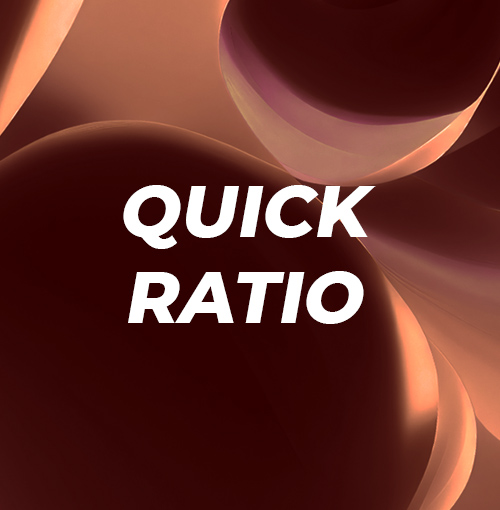
Debt-to-Equity (D/E) Ratio: An Essential Guide
Welcome to this in-depth guide provided by Investora. Today, we are delving deep into the realm of financial ratios, specifically focusing on the Debt-to-Equity (D/E) ratio. This key financial metric can unlock valuable insights about a company's operational strategy, providing a snapshot of its financial health and investment risk level. So, let's unlock the power of the D/E ratio and use it as a valuable tool to navigate the complex world of corporate finance.
Unraveling the Debt-to-Equity Ratio
The Debt-to-Equity (D/E) ratio serves as a prism through which one can assess a company's financial stability. To put it simply, it quantifies the financial leverage a company has by comparing its total obligations to its shareholder's equity. This ratio thereby provides insight into how a company chooses to fund its operations, whether by borrowing or through its internal resources.
Remember: The D/E ratio provides insight into how a company funds its operations - through borrowing or its own resources.
Calculating the D/E Ratio
The formula for calculating the Debt-to-Equity ratio is quite straightforward:
D/E Ratio = Total Liabilities / Total Shareholders Equity
This information can be found in a company’s balance sheet. To understand this better, let's break down the core elements of a balance sheet. The basic equation for a balance sheet is:
Assets = Liabilities + Shareholder Equity
In simple terms, assets, the resources a company owns, are financed by liabilities (what the company owes) and shareholders equity (the net value of the company attributable to shareholders).
However, it's important to remember that balance sheet categories may include items that would not usually be considered debt or equity in the conventional sense of a loan or an asset. For instance, the ratio can be distorted by retained earnings, losses, intangible assets, or pension plan adjustments. Thus, it's essential to conduct further research to understand the extent to which a company relies on debt.
To enhance their understanding and make more accurate comparisons, investors and analysts often modify the D/E ratio. They may focus on long-term liabilities instead of total liabilities or exclude certain types of equity from the calculation. Furthermore, they usually assess the D/E ratio in conjunction with other financial indicators, such as short-term leverage ratios, profitability, and growth expectations. The D/E ratio, therefore, is one piece of the puzzle in the broader context of a company's financial health and stability.
Important: Items like retained earnings, intangible assets, and pension plan adjustments can distort the D/E ratio.
Tip: Always consider the nature of assets and liabilities in the balance sheet while calculating the D/E ratio.
The Versatility of D/E Ratio
Interestingly, the D/E ratio is not a one-size-fits-all measurement. It can be modified based on the needs of the analysis. For instance, investors often adapt the ratio to focus on long-term debt, as it usually poses greater risk than short-term liabilities. In such a scenario, long-term debt replaces total liabilities in the numerator of the original formula.
Reading Between the Lines: Interpreting the D/E Ratio
So, what does a high or low D/E ratio tell us? A high D/E ratio implies that a company leans heavily on borrowed money to finance its operations, indicating a higher risk profile. A low ratio, on the other hand, might suggest that a company is not capitalizing on the power of leveraging debt to fuel growth.
That said, a high or low D/E ratio is not inherently good or bad. If the revenue increase from debt-financed growth outweighs the debt service costs, it can be a boon for shareholders. But the reverse is equally true. Hence, an analysis of the D/E ratio should be supplemented with an understanding of the company's profitability, growth expectations, and market conditions.
Fact: If the revenue increase from debt-financed growth outweighs the debt service costs, a high D/E ratio can be beneficial.
Adjusting for Risk: Long-term D/E Ratio
Not all liabilities are created equal, especially in the eyes of risk. Long-term debt typically poses more significant risk compared to short-term obligations. This makes the long-term D/E ratio – calculated as long-term debt divided by shareholders equity – a crucial variation of the standard D/E ratio. This modification can help investors gauge the risk from a company's leverage more accurately.
Tip: Consider focusing on long-term debt in the D/E ratio when assessing companies with significant long-term obligations.
D/E Ratio in the Personal Finance Landscape
The D/E ratio's versatility extends beyond corporate finance. It can also be applied to personal finance, acting as a personal D/E ratio. Here, equity is the difference between the total value of an individual’s assets and their aggregate debt, or liabilities. Lenders often use this metric to assess a loan applicant’s ability to make loan payments during a period of income loss.
D/E Ratio as a Subset of Gearing Ratios
The D/E ratio is part of the larger family of gearing ratios, financial metrics that focus on the concept of leverage. The principle underlying these ratios is that some leverage is beneficial, but too much can pose a significant risk.
Interpreting D/E Ratios: Industry Matters
When evaluating a company's D/E ratio, the context of the industry becomes critical. As different industries have unique capital requirements and growth rates, a common D/E ratio in one industry might raise alarms in another. For example, utility companies and consumer staples businesses typically have higher D/E ratios due to their stable income streams and large investments.
Important: Different industries have different norms for D/E ratios.
The Intricacies of D/E Ratio Calculations
D/E ratios can sometimes vary based on how 'debt' is defined. For example, the status of preferred stock as debt or equity can significantly impact the D/E ratio. It's crucial to be aware of such nuances when analyzing the D/E ratios of businesses heavily dependent on preferred stock financing, like Real Estate Investment Trusts (REITs).
Tip: Be aware of how a company categorizes items like preferred stock when analyzing its D/E ratio.
Understanding and interpreting the Debt-to-Equity (D/E) ratio can provide investors with invaluable insights about a company's financial health. This metric, part of the larger family of gearing ratios, offers a snapshot of a company's strategy for funding its operations. By comparing a company's D/E ratio with industry standards and competitors, investors can gauge a company's reliance on debt and potential investment risk. However, understanding the context, nuances, and industry standards is paramount for making informed decisions.
- Share this article





